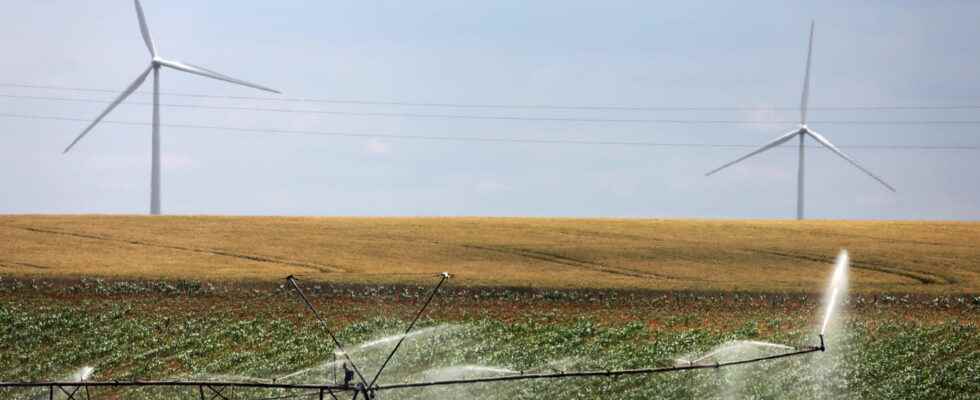The first heat of the year is here but concern already reigns over drought forecasts and the state of groundwater in many departments. Here are the first measures taken and the list of departments concerned.
Will the drought and its consequences add to the many economic concerns at the start of 2022? The first one heat wave of the year is expected this week with temperatures exceeding 25 degrees in most of France and reaching 30 degrees in several areas. However, if this heat wave is not exceptional for the season, it nevertheless arrives early and after several days of above normal temperatures according to Météo France. It should thus weaken already dry soils. The water deficit is glaring in many departments. The Ministry of Ecology estimates the rainfall deficit over the period from September to April at 19% for the whole of France. The water tables have not reached their usual level of recharge with significant shortages reported, of the order of 20% in the Grand-Est, the north of New Aquitaine and the entire South-East. 15 departments are already on the alert with concrete measures put in place for farmers, businesses and individuals alike. Here is all the first info on this 2022 drought.
Which departments are on drought alert 2022? The list
As of May 10, 2022, 15 departments have one or more sectors affected by measures to limit the use of water. Please note, only certain areas may be affected by these prefectural decrees (48 decrees were issued on May 10, 2022) and not all of them have the same scope. While some areas are on alert (i.e. level 1), others have been placed on alert (level 2), on heightened alert (level 3) or even in crisis (level 4).
- Bouches du Rhone
- Charente Maritime
- Two Sevres
- Drome
- Haute-Savoie
- Ille et Vilaine
- Indre
- Loire Atlantique
- Loiret
- Maine and Loire
- Rhone
- Var
- Vaucluse
- Vendee
- Vienna
What is the drought map of France?
Propluvia is the institute of the Ministry of Ecological Transition responsible for monitoring water levels and the internet platform that allows direct consultation of water restriction orders. The site includes a map showing the areas affected by these prefectural decrees.

What are the different drought alert levels? What are the restrictions?
There are four main levels of drought vigilance and all of them result in the implementation of specific measures.
- Drought vigilance (level 1): informing and encouraging individuals and professionals to save water.
- Alert (level 2): measures prohibiting the operation of valves, nautical activity, prohibition at certain times of watering gardens, green spaces, golf courses or washing one’s car. For farmers, reduction of levies for agricultural purposes below 50% (or ban up to 3 days a week).
- Enhanced alert (level 3): stronger limitation of withdrawals for watering gardens, green spaces, golf courses, car washing, etc., until certain withdrawals are prohibited. For farmers, reduction of levies for agricultural purposes greater than or equal to 50% (or ban greater than or equal to 3.5 days per week).
- Crisis (level 4): cessation of non-priority withdrawals, including withdrawals for agricultural purposes. Only withdrawals to ensure the exercise of priority uses are authorized. They concern sectors such as health, civil security, drinking water and sanitation.
What are the small gestures that can help limit dryness?
Individuals have a role to play in limiting drought, in particular through small everyday gestures summarized by the website of the Ministry of Ecological Transition:
- Avoid letting the water run
- Limit the watering of my garden,
- Use washing machines at full capacity,
- Install water-saving equipment.
